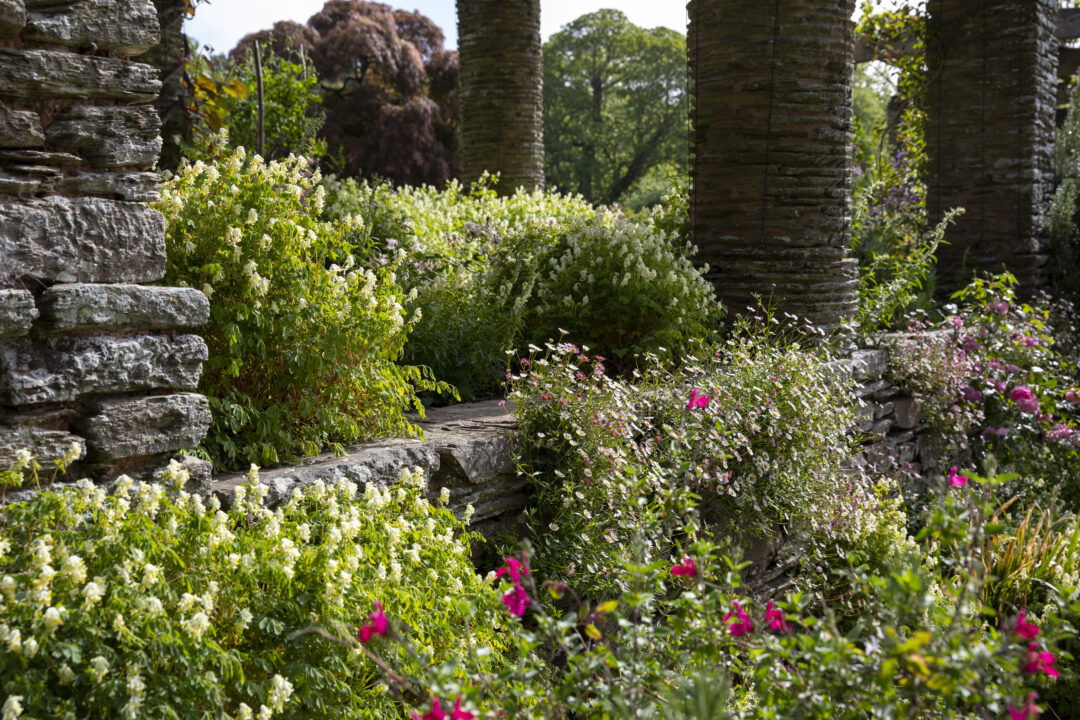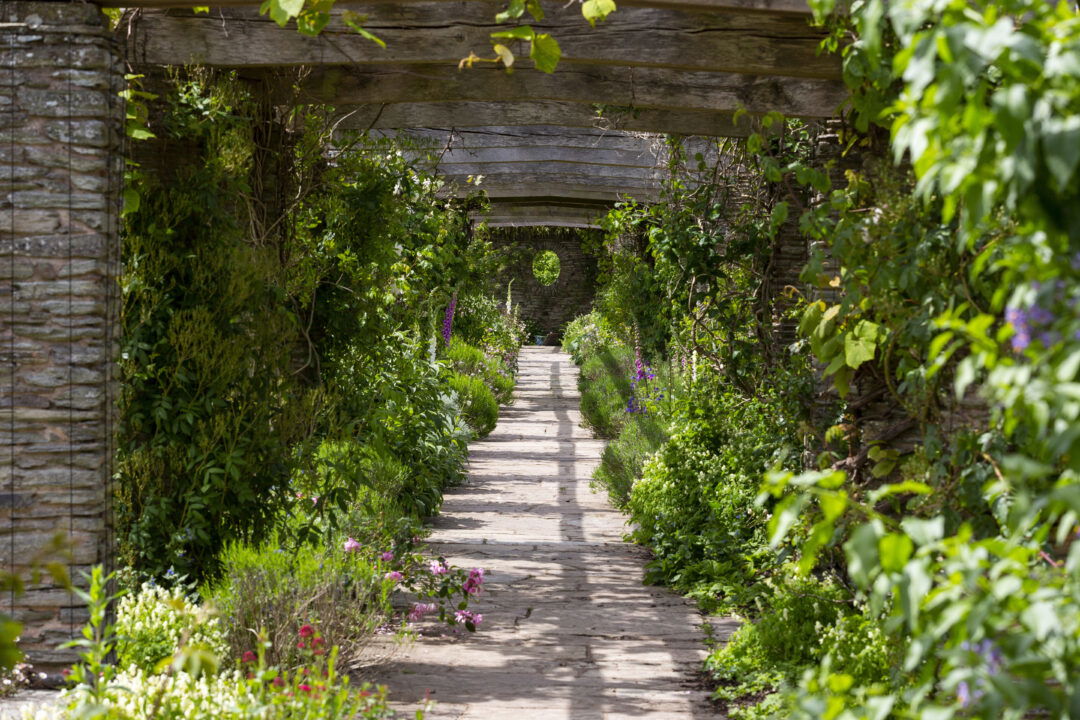Notice
Please be aware that Hestercombe will be closed on Christmas Day and Boxing Day, but will be open daily throughout the rest of the Christmas holidays.
An update from Claire Greenslade on slug invasions, landscape resilience and efforts to enhance sustainability and maintain the garden's unique charm.
Please be aware that Hestercombe will be closed on Christmas Day and Boxing Day, but will be open daily throughout the rest of the Christmas holidays.
May is a rollercoaster of a month in the garden. Sometimes I wish that time could stand still for 5 minutes so that I could enjoy it more! It’s the busiest month of all and you find yourself juggling a long list of jobs from never ending mowing and weeding, to pricking out seedlings, hardening off and planting out and staking, all thrown in. If you lose control at the beginning of May it takes so long to catch up. The garden team has to step up to 2nd gear to maintain anything like control. You’ll hear me using the phrase ‘speed weed’ by which I mean forget the detail and just gather up the armfuls of cleavers and annual weeds that appear overnight.
This season has been unusual, but I think I say that every year, and I am sure I will continue to. We had practically no frost but plenty of rain. We don't normally have too much of a slug problem, but this year (the year that the RHS declared that slug and snails are no longer classed as pests) they have caused quite a scene and devastated a lot of plants. The prolonged rain periods will no doubt mean that we will experience some increase in fungal problems in the garden. I know it hasn't been very sunny but we have broken records in the UK on warmth in early spring, mixed with the rain this has meant that plants have grown at an exceptional rate and as soon as we get some sunshine I think the flowering this year will be phenomenal.
We are carrying on in many areas with No Mow May/June/July as this is massively increasing our insect life across the estate and in turn helping to boost bird and bat populations. If you get the chance, do go and spend some time in the wildflower meadow- it gets better every year and looks amazing at the moment. Walk quietly through the paths and you'll hear how alive this area is.
May is intense…. But so BEAUTIFUL. All the garden areas feel so alive and so romantic and full of charm. My favourite places to sit in May are in the rustic seat gazing at the cascade, or on the grey walk. In this busy time, make sure you have a seat and soak it all up.

We had the great privilege of hosting this year's final of the Young Horticulturist of the Year a few weeks ago. The eight regional finalists aged from 16-30 were subjected to a plant ident set up by Hestercombe gardeners Jo and Gabrielle which included 2 x herbaceous plants, 2 x shrubs, 2 x trees, 2 x annuals, 2 x weeds 1 x grass, 1 x conifer, 1 x fruit, 1 x pest, 1 x disease and 1 x plant disorder. It was really tough, and as if that wasn't enough, next came the buzzer round, and the questions were hard. I would have really struggled to answer many of them but this group of young people were super bright. It was amazing to see the depth of their knowledge. Huge congratulations to the winner Jonathan Zerr who represented the East of England. As the day drew to a close, David Richardson, the president of the Chartered Institute of Horticulture, gave a very moving speech and said some lovely words about Hestercombe that I thought would be nice to share with you all. He said that he had never visited a garden with such a strong sense of place as Hestercombe, or a garden with its own sense of self, a real independent personality. David talked about the importance of independent culture and how he would choose to visit an independent coffee shop over a chain, adding that Hestercombe ‘wasn’t Starbucks’. And I think that's where the beauty lies. We are an independent charity. We stand alone. We haven't been homogenised. Hestercombe is really utterly unique. We have the opportunity to celebrate being different. We may not be perfectly polished and finished but we have some beautiful quirks, and that really adds to our romantic charm.
This month we also hosted a wonderful meeting of minds with Gloucester University and the Countryside Community Research Institute. There were some thought provoking art pieces, performance, and sound experiences dotted around the garden to get us all thinking about landscape. We then had a lively discussion about historic landscapes and the challenges that they are facing across the UK with changes in farming, lack of biodiversity, the effect of pests and diseases such as ash dieback, and how these influences are changing what we consider to be a traditional landscape. We talked about how changes were affecting Hestercombe as a historic garden. The ever changing climates that we are experiencing in the UK are becoming quite challenging in their unpredictability, not only challenging the plants, but also the structures of the garden, the hard landscaping, as well as the wildlife that the whole garden supports. One minute the plants are baked in really hot summers and next they are being flooded! One minute I am saying ‘thank goodness Gertude Jekyll liked Mediterranean plants’ and wondering where I could harness water to keep the cascade flowing, the next minute I am thinking of growing a bog garden! Hestercombe’s USP is based on Historic gardens, working with original planting plans and era specific plants. Our job now is to build some resilience into this plan so that we can adapt where we need to and keep the garden resilient and relevant.
One of the areas that my team have been focussing on making changes to is the Victorian terrace. This area is challenging environmentally. Firstly not many annual bedding suppliers use 100% peat free compost and until the government makes it mandatory this won't change. The supplier we use grows in 40% less peat which is a start! Secondly, bedding plants need the most watering to survive as they only have tiny root systems and water is such a precious resource to us. In other areas of the garden we tend to water well when plants first go in the ground and then only water again if really necessary. The idea of a carpet bedding design is that it is in flower all year around. We think this would be almost impossible to achieve with perennials. But this year we are working on a compromise. The winter bedding has three perennial plants within the design, Carex, Heuchera and Thyme. These will stay in the ground as part of the summer bedding scheme too. As these plants are already established they will require less water. Plus the space that they take up within the design means that we can use less annuals, just enough to add some colour, and therefore we will need to use less water. As well as this we are playing with using some succulents. They will give us the look of carpet bedding but again will need less water. Our long term plans will also be to utilise the roof of the house and to start to be able to capture and store more water, making the whole area more environmentally stable.
It is small steps at the moment but hopefully will go a long way.
I know that I am biassed but it is such a wonderful time of year to be in the garden. Please come and make the most of it. I guarantee you will feel a sense of calm from being in this space.

